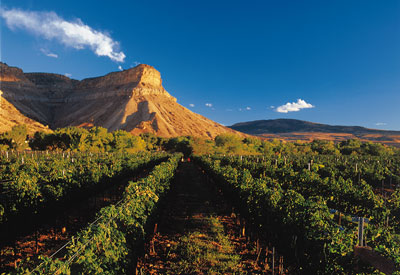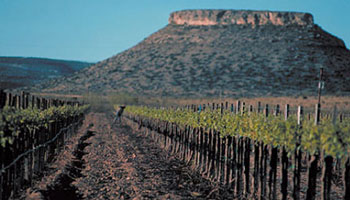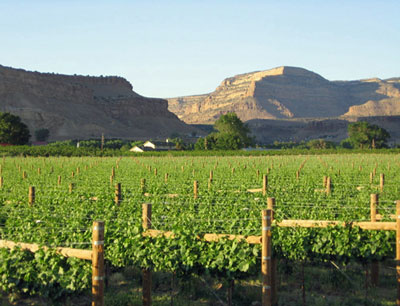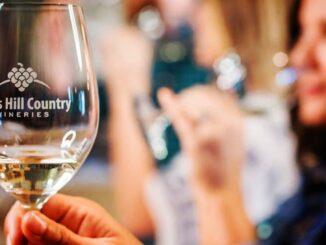Lessons Learned for Local Wine Movements from Colorado and Texas: DrinkLocalWine.com Time
While working on my recently released book, The Wineslinger Chronicles, I had a discussion with Bran Johnson. He was a geology professor at Texas A&M who started growing grapes in Texas. He has since been transplanted into Colorado where he is a commercial winegrower in the Palisades/Grand Junction area on the western edge of Colorado.
As we talked, we realized that Colorado has several things in common with our Texas High Plains: They’re both generally dry and high with good sandy soils, and during their growing season have both hot days and cool nights. They also dominated by a variable continental climate with no natural barrier to block off the influx of cold Canada. This makes winter freeze damage a constant threat to the vines and also sets up conditions for late spring freezes. In this regard, in Texas we see bud break in March, but a damaging freeze can happen thru mid-April in some years. Bran mentioned that he’s seen a similar issue from his days in Texas and also now in Colorado that new winegrowers often give little thought to the position of vineyard relative to low areas that may be pockets for cold air.
I agreed and indicated that when I’ve visited vineyards in Texas that I’ve seen many cases where the grower’s mansion was built on the high ground so that he could get a good view of the surrounding countryside while he enjoyed a glass of wine after a long day’s work in the vineyard. In contrast, the vineyard was relegated to a low spot on the property with no consideration of the sloughing of dense freezing air on a cold spring morning. Equally silly is that I’ve heard many admit to planting Merlot merely because they like to drink Merlot and not because it is a grape variety well suited for the soil type on their properties or the regional climatic conditions in Texas.
Bran conjectured that many people that get into the business of winegrowing in Texas or Colorado just don’t have enough experience to know some of the basics: Cold spots, the need for freeze protection, and grape variety selection to for winter-kill resistance, or to delay bud break and/or maximize production on secondary and tertiary buds.
Other issues in both Colorado and Texas are wind and hail damage which also derive from the variable continental climate that often suffers from the clash of cold north winds and warmer air from the south. In this regard, Texas and Colorado are more like growing regions of central Europe (e.g. from the Rhone Valley thru the Piemonte region of northern Italy which see some of these same problems. The climate is just not as predictable vintage-to-vintage there (or here) as it is in Napa Valley, but that doesn’t have to mean that we can make quality wines. It will just take a little more planning and attention to certain details.
Bran mentioned that Drew Tallent (now a well-seasoned and respected winegrower in Mason County Texas) wasn’t convenience initially on the need to handle freeze problems. But, over the years Drew has worked through many of these issues as has Alphonse Dotson in his Certenburg Vineyard in Voca, Texas. I’ve seen serious business studies on commercial grape growing in Texas which teach prospective winegrowers to expect a total loss once in every 7 years which requires at least four good harvests during that period to achieve economic viability. However, if you look at 4 of the past 5 vintages in Texas (the exception being the marvelous 2010 vintage) they have been difficult with significantly reduced grape production from multiple perils: Spring freezes, hail, winter kill, late summer rains, and the opposite extreme – hot drought conditions as we saw in 2011.
Many winegrowers and winemakers in new “local wine” regions around the United States hired consultants from California wine country. Part of their California mantra was to grow and make wine from “tried and true” grape varieties that did well in California (Cabernet, Merlot, Chardonnay and Pinot Noir) with little understanding of the differences in the soil types, climate and extremes of weather in places like Texas and Colorado. At the time, these pioneering local growers and winemakers felt lucky if they got a decent crop of wine grapes and really did not really think about getting the best expression from these Bordeaux and Burgundian grapes. In Texas, the wine industry spent nearly thirty years trying to convince the wine consuming public in the state that Texas was “Bordeaux” and “Burgundy”, admittedly sometimes having good results in the wine glass if not economically. But, mostly what resulted were OK warm weather versions of these wines.
My mantra now is “Texas just ain’t Bordeaux and it sure as hell ain’t Burgundy!” I will leave the people of Colorado to speak for themselves as to what Colorado is or isn’t like when it comes to their local winegrowing exploits.
The lessons from these early local wine experiences are for local growers and winemakers to focus more on growing grapes that fit the local terroir and climate. In Texas, these are warm weather grape varieties that derive from Spain, Portugal, southern France and Italy. However, more recently, it was realized that, to fit the peculiar episodes of late spring freeze, Texas needed a peculiar subset of these Mediterranean grapes that also had the ability to bud later than classic varieties and even later than most of the Mediterraneans (a whole two weeks later). I feel that Texas is in the corner of the winegrowing box: up against heat and drought as well as winter cold temperatures and spring freezes. That’s simply what the local conditions require. I might also add that in regions of Texas susceptible to Pierce’s Disease, the focus needs to be hybrid grapes like Blanc Du Bois without being a bit bashful about it. Blanc Du Bois growers of East Texas and the Gulf Coast, keep at it, hold your heads high, and the market will find you.
I always keep in my mind a story I read once about why the winegrowers on the Normandy coast of France near Nantes around the mouth of the Loire River (Pays de la Loire) grow a generally bland white grape called Melon de Bourgogne. They make it a nearly featureless white wine that is almost as clear as water. History has it that during the years of cold weather referred to as “the mini-ice age” in the early 1800s, the Melon grape was the only one that survived the severe local conditions. Well, the rest is history and these growers and winemakers embraced the Melon grape as it provided a dependable harvest. It probably also helps that the light bodied white wine called Muscadet Sevre et Mainepairs well with their local seafood.
In Colorado, while they too started with the classic grape varieties of Bordeaux and Burgundy, they’ve also started to seek out grapes for their local terroir. While still growing many of these classic French varieties, Bran particularly likes what Riesling has to offer Colorado viticulture. In Bran’s Palisades/Grand Junction region of Colorado temperatures in mid-summer are like those in the Hill Country of Texas. It’s hot in the daytime from June through August, but it cools down in September when they are approaching harvest. Night time temperatures start to moderate in August, as well. Riesling is late grape to ripen in Colorado and sometimes can hang until the end of October before being harvested (do I hear a possibility of icewine here?).
Bran readily admits that in France it took “a hundred plus years” to gather experience and make correlations that ultimately assured quality and now limit production to the specific varietals in certain regions, and these grapes are now known as “The Classics”. Since the Phylloxera infestation that decimated the French and European vineyards in the late 1800s, the French have also had to evaluate growing their classic varietals on rootstock and variations in planting, growing and winemaking methods that have evolved since that the days of Phylloxera.
The modern California wine industry started in earnest following the gold rush of the 1850s and it took a little over a hundred years to evolve. Why would we think that local winegrowing and winemaking in many states around the USA would or should be any different? Many of these state wine movements like in Colorado and Texas did not really begin until the 1970-80s and we are now only partially through our 100 year period of learning.
As local wine consumers need a degree of patients to receive a truly quality local wine experience. However, a little common sense winegrowing in parity with the local terroir and confidence from local wineries in their ability to sell quality wines made from grapes selected for the local terroir should help kick-start the process. Throw in a dose of scientific method and passion from local viticulturalists and enologists and there should be ample driving force to sustain quality local wine movements in states all around the USA.
For more information on local wine, following the goings-on at DrinkLocalWine.com, local wine Twitter by following hashtags #drinklocal and #localwine, check up on local wine activities in your state on Twitter using your state’s two digit abbreviation followed by “wine”…e.g #TXwine, #COwine, #VAwine, #MOwine.
Also, mark your calendars for the 2012 DrinkLocalWine.com Conference being held April 27-29, 2012 in Denver, Colorado.





Nicely done, Russ. Can you send links to this piece to every regional wine producer and grower in the country?
Good piece, Russ.
Are you going to be in CO next month?
Unfortunately not, but I’m trying to support the DLW cause from home.
The book (http://wineslinger.net) release combined with elder care issues recently have made it necessary to restrict distant travel.
Hope to bump into you in hte future. Best of success with the conference and in promoting the cause of local wine.
Russ
I like what you said that ,” we are now only partially through our 100 year period of learning”. I totally agree with you that Texas vine growers are going to have to be patient as we learn through trial and error which varietals will become “Texas Classics”.
Hey Russ,
Do you know how to get ahold of Dr. Johnson? He was my geology professor at A&M and I would love to reconnect.
Dax